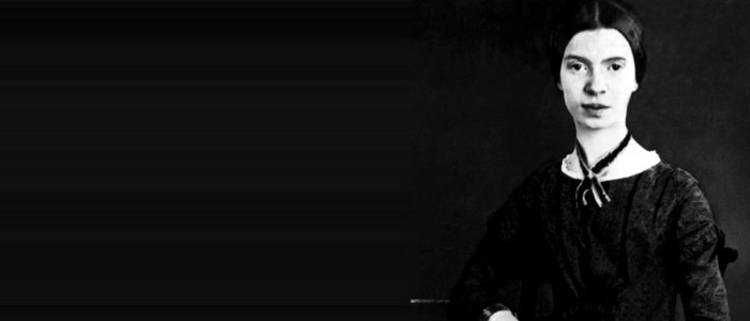


Since Emily Dickinson is America’s most iconic poet, along with Walt Whitman, it’s both edifying and inspiring for Italians and Italian Americans to view how she saw Italy as a land of artistic and emotional freedom in her poetry, a place in which she longed to be in order to escape the strictures of Puritan Victorian social mores. Dickinson’s poems tell of emotional qualities associated with her “Blue Peninsula” and its volcanic and geographical structures, its volcanoes so symbolic of erupting emotions. The young 19th century American poet learned of Italy through books and discourse as a valued European country of cultural and artistic expression, a peninsula whose northern neighbor was Switzerland with its more austere aspect of propriety— boarded by the Alps in the north and crossed by the Apennine Mountains, a land of two large volcanoes, Etna and Vesuvius, and the homeland of Dante, Columbus, Galileo, and various accomplished painters of renown.
Most Emily Dickinson scholars, of which I’m one, agree that the iconic American poet’s emotional life can be better reconstructed from the content of her poems than from imaginative research into her biography. It’s edifying to note that her poetry contains a variety of verses in which Italy, it’s culture, and its geography play an important symbolic role. As Judith Farr explains in The Gardens of Emily Dickinson, (Harvard UP. 2004, p. 99) the poet, “who liked to think she saw ‘New Englandly,’ was, though Puritan in her disciplined upbringing, profoundly attracted to the foreign and especially to the semitropical or tropical climes…. [in particular Italy’s] that she read about in Harper’s and The Atlantic Monthly….” I've written an essay, linked here in full, that presents Dickinson’s lyrics concerning her love of Italy, and cultural ideas related to it, as symbolic of her beliefs and aspirations.
With the invention of the steamship and ocean liner, the mid-19th century saw more and more ocean travel, and the rural aristocrats of Dickinson’s Pioneer Valley of Massachusetts began to journey abroad and be educated in fine European universities, bringing home tales of foreign lands and customs that were inviting to those repressed by the more extreme dogma of Puritanical Calvinism. Professor William Smith Clark of Amherst College, for one example, was educated in Europe and travelled in Italy on more than one occasion, as did other professors of Amherst Seminary next door to Dickinson’s homestead, and founded by her grandfather. Professor Clark, while attaining his European doctoral degree, travelled the Continent, and wrote home to Amherst to Dickinson’s neighbors, their cousins in common, the Sweetsers. At table with the Sweetsers, Dickinson heard of Clark’s travels and firsthand observations of Italy’s artistic attributes, natural wonders, social mores, and architectural artifacts. We know that he came home from Europe, to shock Amherst residents with his Italian-style greetings consisting of kissing and hugging—unheard of in Anglo New England society wherein a distant handshake between gentlemen, and a tip of the hat to a lady, were the Victorian norm. Mm. DeStael’s Corinne ou l’talie believed Italy to be the land where the arts were appreciated, and the sweet life, La dolce vita, not constricted by dogmatic hypocrisies, or held at bay by a Puritan work ethic. This idea was imprinted in the American mind as well.
Dickinson used symbols of Italy to actualize the idea that emotional freedom to love art, poetry, and lover, “is all there is” and “its own rescue.” Emily Dickinson dreamed of the emotional freedom and expressiveness that she felt was the province of Italy and its culture. In my essay, I quote her poems containing symbolic images of Italy and her longing for her “Blue Peninsula.” One example is: “Our lives are Swiss - So still - so Cool - Till some odd afternoon / The Alps neglect their Curtains / And we look farther on! /Italy stands the other side! / While like a guard between - The solemn Alps - The siren Alps / Forever intervene!”
----------------------------------------------------------------
A longer version of this essay is available. Click here. [2]
----------------------------------------------------------------
* Daniela Gioseffi of New York is an American Book Award winning author of fourteen books of poetry and prose. She has published a novel on the life of Emily Dickinson with a non-fiction afterword: Wild Nights, Wild Nights: The Story of Emily Dickinson’s Master. A featured speaker on many campuses and at international book fairs, as well as on NPR, the BBC and The Library of Congress Radio Show sponsored by The National Endowment for the Arts, she has two grant awards in poetry from NY State Council on the Arts, The John Ciardi Award for Lifetime Achievement in Poetry, a Lifetime Achievement Award from the American Italian Educators Association, and a New York’s Order of the Son’s of Italy Literary Award. She founded The Bordighera Annual Poetry Prize for bilingual book publication in English and Italian, with the help of Alfredo dePalchi, Italian Poet. Daniela’s father Donato Gioseffi was born in Apulia, near Bari, in Orta Nova, and Daniela has travelled through Italy on various occasions visiting Milano, Roma, Vinezia, Firenze, Pisa, Perugia, San Marco, and Apulia’s Bari, Candela and Orta Nova, etc. and studied in Urbino. She is a pioneer of The Italian American Renaissance in Literary Arts.
Source URL: http://iitaly.org/magazine/focus/art-culture/article/adoration-italy-in-emily-dickinsons-poetry
Links
[1] http://iitaly.org/files/emily-dickinson031317580838jpg
[2] http://iitaly.org/files/1/Italy_Dickinson_Gioseffi.pdf